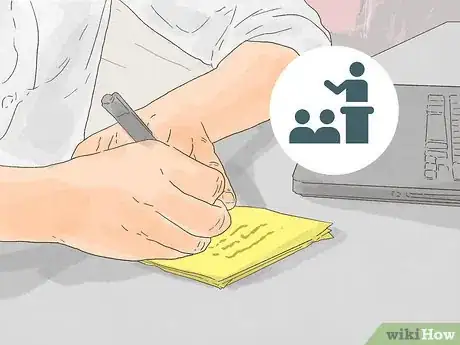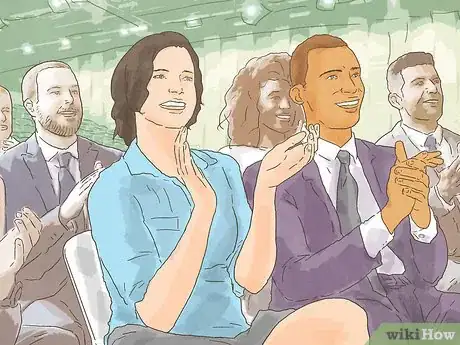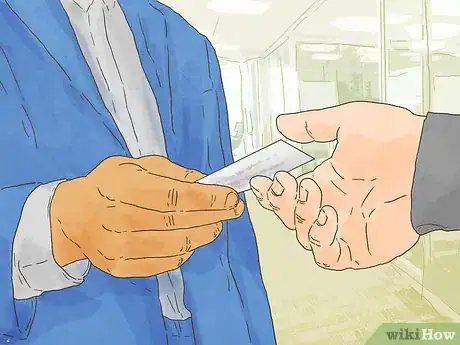wikiHow is a “wiki,” similar to Wikipedia, which means that many of our articles are co-written by multiple authors. To create this article, 17 people, some anonymous, worked to edit and improve it over time.
This article has been viewed 114,288 times.
Learn more...
In the US, except in the so-called "right to work" states, a union contract almost always includes a provision which requires that you, the employee, must pay some kind of fees or dues to the union. You may not want, however, to support that union as your “exclusive bargaining representative” and become locked in along with the company and your coworkers.
Many workers are scared into believing removing a union from their work place and everyone acting independently will guarantee that their company will keep them on. What often happens instead is that employers are now free to terminate them at will, as they are no longer obligated by contract and now employees are no longer interested in supporting the community of their co-workers. By using such tactics, corporations effectively divide and conquer the workforce by pitting them against one another. Of course, there are occasions when one union is no longer favored by employees and they may consider that another union will represent them better, be a better fit in understanding their needs, and work together better with them.
"Under the National Labor Relations Act (NRLA), if 30% or more of the employees in a bargaining unit sign a Decertification (decert) Petition, the National Labor Relations Board will conduct a secret ballot election to determine if a majority of the employees wish to decertify the union and stop it from any further “exclusive representation."[1]
Steps
-
1Consider whether and how you (or someone you know) may be employed in a workplace where a union has the right to “represent” you and collectively bargain for you which many workers may/may not like.
-
2Look into how your National Labor Relations Act (NLRA) USA and your state's laws give unions “exclusive representation” power, but that contract may be: [1]
- Terminated by the workers as a decert, or
- Changed by state and local contracts, or laws (statutes).
Advertisement -
3Check that some state governments grant bargaining privileges that:[1]
- Give union officials monopoly (exclusive) power to make contracts;
- Bar you and other employees from individually negotiating your own contracts and terms of employment.
-
4Explore decert elections: though it is generally challenging, the NLRA allows employees to call for a special election to completely get rid of the union as their “exclusive representative.”[1]
- "Decertification Election" -- employees revoke the union’s "certification" to be the exclusive "bargaining representative".
- In effect, the union may be voted out of your workplace.
- Elections of this type occur under the laws in the NLRA, which governs the general U.S. national labor relations of most private sector workers.
- "Decertification Election" -- employees revoke the union’s "certification" to be the exclusive "bargaining representative".
-
5Decide whether you would prefer to seek to decertify in order to have a workplace where you are free to discuss your terms and conditions of employment directly with the employer, without intervention by a third-party (union).
-
6Decide whether you would work for state right to work legislation -- if you prefer a workplace in which union membership and the payment of dues is voluntary, which may require the company and union hierarchy to be accountable to negotiated, agreed upon rules, without requiring unionism or money from you to the union.
- Instead of relying on the power of rules in the union-state to gain financial support for the union -- perhaps, including firings for refusing or failing to follow union-contract rules -- union officials may have to sell the benefits of union membership to each individual employee in the open union shop.
-
7To get started: The petitioning employees should decide the strength of the support for decertification within your specific bargaining unit. It can be worth it, only if you, the petition signers, agree that you could win.
-
8Get the official "NLRB’s Petition form" at the website which requires Adobe Acrobat Reader (PDF). You can find a directory of the regional NLRB offices in your area on the website.[2]
-
9Get/collect signatures when the employees are on non-work time (before and after shifts, at lunches and at breaks), and in non-work areas! You must fill in the names of the union and the employer in the blank spaces above on the petition form before you collect signatures.
- Use no employer help to collect signatures of 30% or more of employees, with no employer resources to get votes (no employer motivation, promises and not on company work time), or it will be thrown out, if proven.
-
10Attach the separate NLRB “Petition cover sheet”, filled out, which is "NLRB Form 502". This one sheet of paper is easy to fill out, and is available from any Regional Office of the NLRB.[2]
- If the number of valid signatures are more than 50% of the eligible employees of that particular bargaining unit represented by the union, then the signed employees can request that your employer immediately withdraw recognition from the union, because it does not enjoy the support of a majority of employees in the bargaining unit.
-
11To win: You need the simple majority of only those that actually cast the ballot on the "official election day, place and time allowed" with the positive answers meaning Yes, I agree to decertify (more than 50% out of those who showed up and voted).[1]
Petitions
-
1Be sure your petition is an employee effort (not lead by the company). Employer assistance is unlawful.
-
2Realize that there is any employer assistance, the union can nullify the effort by filing an "unfair labor practice" charge and winning that.
-
3To proceed, employees can collect signatures on a petition, to decert or deauth, which may read something like the examples that are available from the: nrtw, National Right to Work Organization.
Decert versus deauth elections
-
1Research the difference between these decertification and deauthorization elections.
-
2Find out about your own kind of union, like "state and local government employees" or "public school employees" who have comparable procedures that may differ from private sector "decertification" processes.
-
3Consider "public sector deauthorization laws" -- state laws governing public employees that provide for:[1]
- Decertification election to totally remove the union.
-
Deauthorization election to only remove the “union security” clause from the contract election. It has only one purpose and effect, to undo union required payments and membership in the union, but:
- Keeps the union as the exclusive bargaining representative.
- Keeps the collective bargaining agreement in effect, except for the required unionism clause (membership or dues become voluntary).
Community Q&A
-
QuestionIf we decertify our current union, how long will it be before we can bring in a new union?
 AvestaCommunity AnswerSomeone has to step up for one. It may take 10 years or 2 hours.
AvestaCommunity AnswerSomeone has to step up for one. It may take 10 years or 2 hours. -
QuestionWhat if a union has not provided employees to an employer? The employer has been signatory for 7 years and only 1 member has ever been provided. The remainder of the employees were employer hires.
 TorpiTop AnswererThe purpose of unions is to protect employees at a given organization or in a given industry, not to provide new hires. That is the job of the employer. In the vast majority of cases, you cannot even join a union until you have already been hired.
TorpiTop AnswererThe purpose of unions is to protect employees at a given organization or in a given industry, not to provide new hires. That is the job of the employer. In the vast majority of cases, you cannot even join a union until you have already been hired.
Warnings
- Caveat: In the U.S.A., law and rules and procedures for airlines and railways differ from other employers covered by the "U.S. Railway Labor Act (RLA)", not the NLRA laws and regulations.⧼thumbs_response⧽
References
- ↑ 1.01.11.21.31.41.51.61.71.8"Decertification elections" http://www.nrtw.org/decertification-election
- ↑ 2.02.1Federal government National Labor Relations Board https://www.nlrb.gov/
- Partially based on this article, http://www.nrtw.org/decertification-election of the NRTW, National Right to Work Organization. (There is also a National Right to Work Committee website and, perhaps, others.)













































































